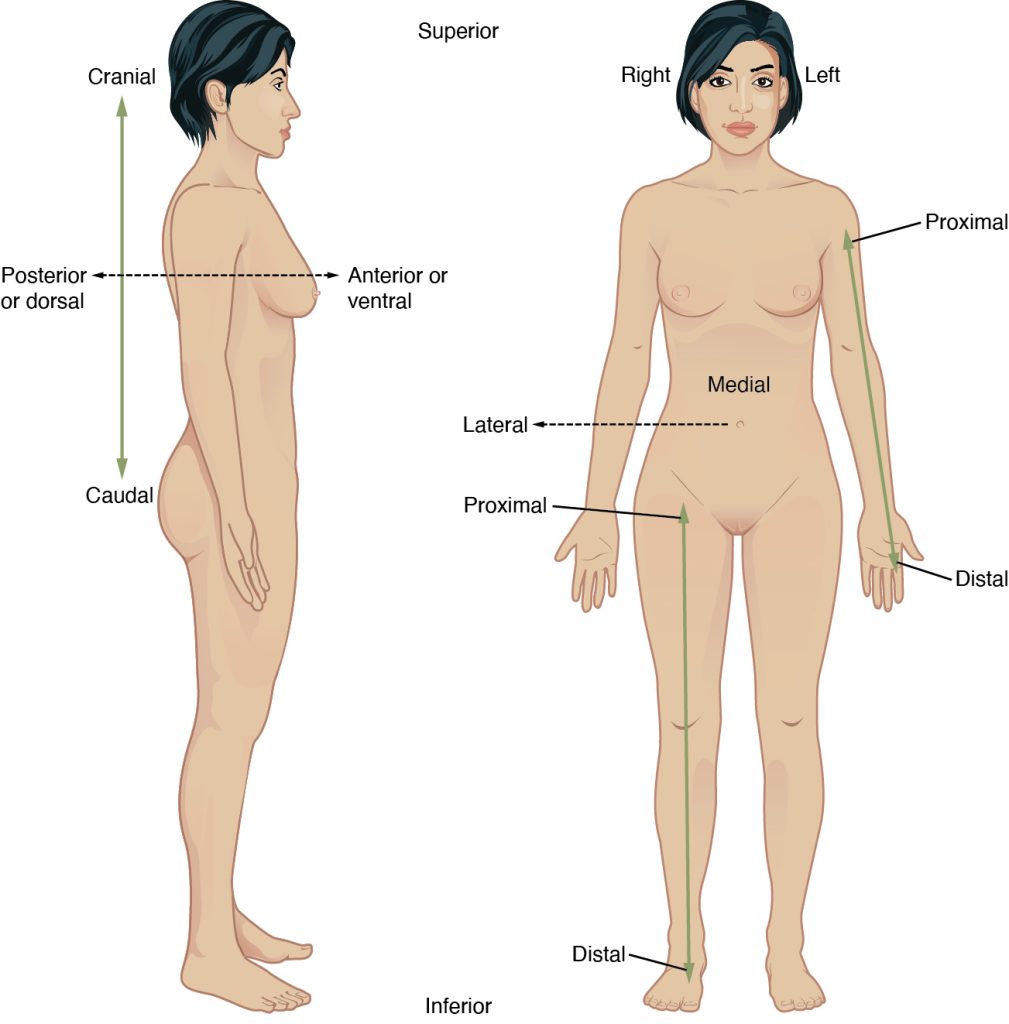1.5 Directional Terms
Directional Terms[1]
Directional terms describe the location of body structures related to each other based on the body in standard anatomical position. See Figure 1.6[2] for an illustration of directional terms.

Table 1.5 describes pairs of common directional terms used for the human body.
Table 1.5. Common Directional Terms in the Human Body
Anterior: Towards the front, or in front of another structure
|
Posterior: Towards the back, or behind another structure
|
|---|---|
Ventral: Toward the belly side of the body
|
Dorsal: Toward the back side of the body
|
Lateral: Toward the side of the body
|
Medial: Toward the midline of the body
|
Distal: Farther away from the point of origin or attachment to the body
|
Proximal: Closer to the point of origin or attachment to the body
|
Inferior: Below or lower than another part of the body
|
Superior: Above or higher than another part of the body
|
Caudal: Near the tailbone or lowest part of the spinal column
|
Cranial or cephalic: Towards the head
|
Superficial: Closer to the surface of the body
|
Deep: Farther from the surface of the body
|
Ipsilateral: On the same side as another structure
|
Contralateral: On the opposite side as another structure
|
Complete a supplementary Wisc-Online learning activity on directional terms: Anatomical Terminology: Relative Position.
- Betts, J. G., Young, K. A., Wise, J. A., Johnson, E., Poe, B., Kruse, D. H., Korol, O., Johnson, J. E., Womble, M., & DeSaix, P. (2022). Anatomy and physiology, 2e. OpenStax. https://openstax.org/books/anatomy-and-physiology-2e/pages/1-introduction ↵
- “a59726df05f699677bf493d90ffce58114fb8966” by OpenStax is licensed under CC BY 4.0. Access for free at https://openstax.org/books/anatomy-and-physiology/pages/1-6-anatomical-terminology ↵
The location of body structures related to each other based on the body in standard anatomical position.
Towards the front, or in front of another structure.
The study of how body structures work to support life.
Toward the belly side of the body.
Toward the back side of the body.
Toward the side of the body.
Toward the midline of the body.
Farther away from the point of origin or attachment to the body.
Closer to the point of origin or attachment to the body.
Below or lower than another part of the body.
Above or higher than another part of the body.
Near the tailbone or lowest part of the spinal column.
Towards the head.
Closer to the surface of the body.
Farther from the surface of the body.
On the same side as another structure.
On the opposite side as another structure.

